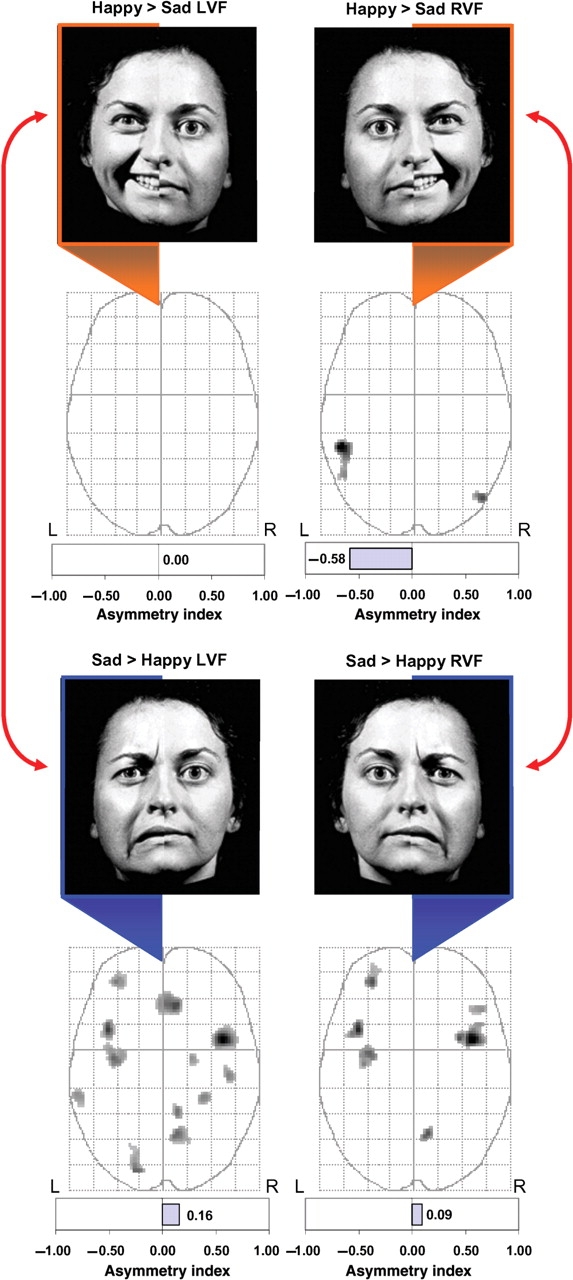Fig. 4.

Comparisons between valence conditions. Brain activity associated with happy vs sad stimuli restricted to a single visual field was compared using paired t-tests (P < 0.005, uncorrected) and displayed on MIPs in the axial plane. For LVF stimuli, there were no regions where unilateral happy hemifaces produced greater activation than unilateral sad hemifaces. In contrast, sad hemifaces presented to the LVF produced significantly greater activity across a distributed bilateral network of affective brain regions when compared activity produced by matched happy hemifaces. For RVF stimuli, happy hemifaces produced significantly greater activity in bilateral middle temporal gyri, whereas sad hemifaces restricted to the RVF produced significantly greater activation within several distributed affect regions of both hemispheres when compared to comparable happy hemifaces.
